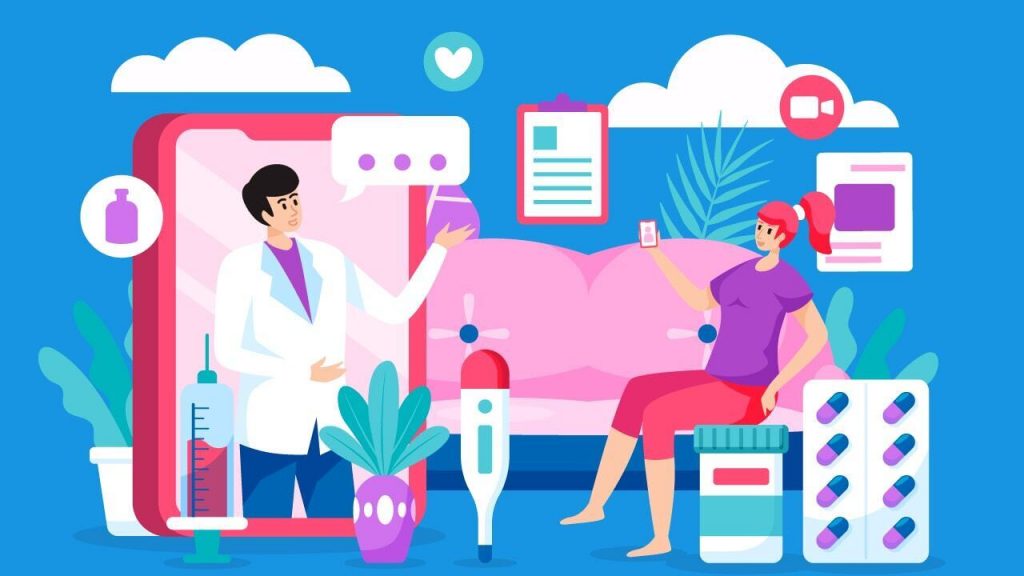When we speak about software development for healthcare, generally we also tend to discuss electronic medical records (EMR), which are gaining popularity here. Healthcare professionals are realizing how beneficial it can be to store patient data online, in an electronic format, rather than in files. We all know how those age-old files turn out to be after some years: dumped in some dusty archives room with piles of folders of old patients’ data, an important data that is forgotten. Healthcare software development has come to bring out a much-needed change in this practice.

Through digital transformation, custom healthcare software development companies have greatly enhanced the accuracy of patient information. Now, patient data exchange between health institutes is also possible, to create future health plans and look at the current situation.
There are two ways software development for healthcare is serving this sector: 1) through off-the-shelf solutions and, 2) with bespoke models. While contemporary EMR and healthcare models offer many features, still one kind of software hardly fits the majority of healthcare workers. Functionalities like patient search, data comparison, electronic prescription, appointment scheduling, billing, and lab test integration are just some of the necessary features that doctors and health practitioners might need. To fit all of them in a single app might be great, but what about for those who do not need these many features?
- Why the Healthcare Sector Might be Hiring the Wrong Kind of Professionals?
- AR in Healthcare: 5 Reasons How Immersive Technology is Changing Lives
- 7 Reasons Why Value-Based Healthcare Serves You Better
To optimize workflow here, software development for healthcare should find customizable solutions towards EMR to increase the efficiency of patient care.
Why Should We Aim Software Development For Healthcare To EMR?
If you ask a physician about what do they want from their EMR healthcare software development, they will probably answer ‘accurate, fast, customizable, and easy design’. While aiming for software development for healthcare, know that the target customers here do not pay heed to flashy and eye-catching colourization and buttons. Instead, it would be better if the EMRs you are designing rather have intuitiveness to the components, which is also simple and trendy.
Instead of focussing on animations and other details, focus on topical issues like text size, menu location, colour scheme, and search. Then, most importantly, focus on the interactive side of it. How the information will display for the users and how will they enter their information? The data entry part of the field must be simple and accurate and it must serve exactly the purpose of the application. This should form the base of software development for healthcare.
Furthermore, all discussions related to the EMR interface must also include all specific target devices like desktop, touch screens, laptop and tablets. It must be made using accurate insight of user roles and their preferences. Custom healthcare software development company should also look into the audience work environment and the tasks they perform.
User-Specific EMR Software
After you invest in software development for healthcare and nurse logs into your app, they will be expecting fields relevant to them. This is what user-specific EMR is all about. The healthcare application should identify which sort of user is logging into the system and then present that user with a dashboard that is relevant to them. To give detailed customer insight to patients regarding illnesses a clinic is treating is probably not the best idea. Give them what they want: a record of their data and their history. Overview and larger insights should be reserved with hospital administration or healthcare practitioners, people who require data to make changes.
Make Device-Specific Interface
In healthcare, different workflows involve physicians using different kinds of patient care system environments. Some prefer to use them on the go, hence use tablets or touch screens. Others prefer gathering and sorting data in an office, hence they want something for their desktop, and so on. During software development for healthcare, it is important that the product recognizes needs for all types of users and displays a UI pattern fit for that device.
To go one step ahead of this would be to recognize the need for role-specific users. For example, a nurse checking patients’ blood pressure would need to use a handy device to input data, hence she would rather use a tablet. In such an example, the UIs doesn’t have to be flashy, they just need to perform the action input by the user, which is the nurse.
Meeting Expectations
As is the discussion above, healthcare software development for something that can fit most of the users in the audience base is bound to lack in most things. Consequently, its usability was not given the desired importance during design. Next, a software that crams all sort of functionalities in a single place is not only reducing visibility but also decreasing wok efficiency, something which the software is trying to increase in the first place.
To guarantee a perfect balance, software development for healthcare should be done in such a way that custom healthcare software development companies and medical professionals work to understand the nature of each other’s work. Leverage expertise of the development team to create a custom EMR system that is simple in design and gets the maximum job done.
